Intelligent Monitoring system of Water quality Environment in Modern Aquaculture
The continuous deepening of scientific research and technology of agricultural and aquatic products in China and the continuous improvement of awareness of environmental protection have put forward higher requirements for continuous real-time monitoring of water quality parameters. however, at present, most of China's agricultural production still stays at the traditional level of relying on manual experience, and few automatic control is realized. Aquaculture environment intelligent system is a new aquaculture method produced in the process of modernization, enterprise and large-scale development of aquaculture industry, which realizes high-density, high-yield and high-efficiency fishery production. The intelligent aquaculture water quality monitoring system is oriented to the development needs of intensive, high-yield, efficient, ecological and safe aquaculture, based on Internet of things technologies such as intelligent sensing, wireless sensing network, communication, intelligent processing and intelligent control. The Internet of things system of aquaculture integrates the functions of online collection of water quality environmental parameters, intelligent networking, wireless transmission, intelligent processing, early warning information release, decision support, remote and automatic control.

Intelligent system of Aquaculture Environment
The intelligent system of aquaculture environment is developed to meet the development needs of intensive, high-yield, efficient, ecological and safe aquaculture, and is based on Internet of things technologies such as intelligent sensing, wireless sensing network, communication, intelligent processing and intelligent control. The Internet of things system of aquaculture integrates the functions of online collection of water quality environmental parameters, intelligent networking, wireless transmission, intelligent processing, early warning information release, decision support, remote and automatic control. Through information terminals such as mobile phones, PDAs and computers, farmers can grasp the environmental information of aquaculture water quality in real time, obtain abnormal alarm information and water quality early warning information in time, and automatically adjust the control equipment in real time according to the monitoring results of water quality. realize the scientific breeding and management of aquaculture, and finally achieve the goal of saving energy and reducing consumption, green environmental protection, increasing production and income.
Through the monitoring system in the monitoring center, aquaculture technicians can grasp the environmental information of aquaculture water quality in real time, obtain abnormal alarm information and water quality early warning information in time, and adjust the control equipment in real time according to the water quality monitoring results. realize the scientific breeding and management of aquaculture, and finally achieve the goal of saving energy and reducing consumption, green environmental protection, increasing production and income. Users can also grasp the water quality information and staff working conditions of farms distributed in different locations in real time through the network.
Advertisements (adsbygoogle = window.adsbygoogle | | []) .push ({})
Water quality monitoring stations can choose to install dissolved oxygen sensor, pH sensor, water level sensor, salinity sensor, turbidity sensor, etc., together with intelligent data acquisition, mainly to achieve on-line collection, processing and transmission of water quality environmental parameters of the farm. The oxygen enrichment control station includes a wireless control terminal, a power distribution box, an air compressor and an aeration oxygen enhancement pipe (or aerator). The wireless control terminal gathers the information collected by the water quality monitoring station, according to the demand for dissolved oxygen of different breeds, the action of the oxygen enrichment equipment is controlled by the algorithm model. The site and the remote monitoring center include the WSN wireless access point and the field monitoring computer. The data collected by the wireless control terminal is collected to the field monitoring computer through the wireless access point. The user can query the water quality parameter data locally, at the same time, the monitoring computer analyzes and processes the data, makes the control decision, and sends control instructions to the distribution box through the wireless access point.
The remote monitoring center receives the data information gathered by the wireless control terminal through the GPRS remote access point. Users can query the water quality information remotely through mobile phones, PDAs, computers and other information terminals. At the same time, they can also analyze and process the data, make control decisions, and remotely control the oxygen equipment. The aquaculture water quality on-line monitoring system includes high precision sensor probe (sensor), data acquisition and analysis terminal, wireless communication terminal, intelligent oxygen transmission control cabinet, intelligent mobile display terminal, Internet cloud server, online mobile terminal display and control software and other software and hardware facilities, which provides a strong scientific and technological backing for the information and intelligent realization of aquaculture. The system allows managers in related fields to view the sampling data of the probes of each monitoring station online. At the same time, it provides a short message prompt function, which makes it convenient for managers to know the parameters of water quality in time, so that managers can get the warning news of water quality problems at the first time. So as to take timely measures to avoid losses.
When the system is running, the data collected by RIU, such as dissolved oxygen and temperature, are transmitted to the WEB server through DTU in real time. The WEB server stores these data in real time and provides users with the function of querying at any time in the form of web pages. At the same time, according to the alarm or prompt conditions set by the user, the system will send the dissolved oxygen and temperature information to the user-designated mobile phone in real time through a text message, so that the user can know the water quality anytime and anywhere.
Finally, the editor of the industrial mining network gives you the popularity of the two most popular and popular water quality sensors, and they are all high-quality products imported from the United States. You know, the strict testing requirements of the United States in terms of export product quality are famous all over the world and are trusted by countries all over the world.
American sensorex Water quality Sensor (General pH electrode)-S200C:
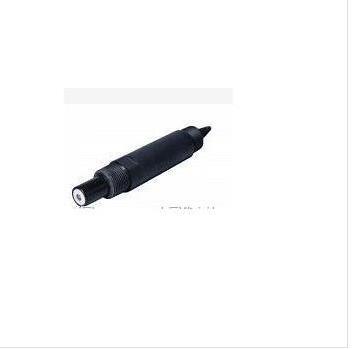
Water quality sensor (universal pH electrode)-S200C
This series of electrodes are mainly economical designed for a variety of applications such as on-line or bypass installation, with a rugged spherical or flat PH glass design, and the shell materials are made of rugged epoxy resin or Ryton material. The general-purpose electrode is an economical and multi-purpose PH electrode, which is suitable for on-line or immersion installation, and there are many types to choose from (single-liquid or double-liquid interface, glass ball measuring surface or flat surface measuring scalar, etc.).
General pH electrode specifications:
1. Measurement range: 0-14 pH (+ /-2000 mV for ORP module)
2. Shell materials: PVC, Ryton, CPVC, Polypropylene, Epoxy
3. Maximum service temperature: 65-100C, depending on the type (PVC material is only used at 65C)
4. Maximum pressure: 100psig
5. Interface: BNC (other interfaces are added according to requirements, and there are multiple interfaces to choose from)
6. Signal line length: 30 inches or customized according to requirements (Cap-cable S653 required for S222 Series)
7. Process connection: MNPT interface is used for submerged or online installation
Sensorex chlorine dioxide sensors-CLD502,CLD505 and CLD510:
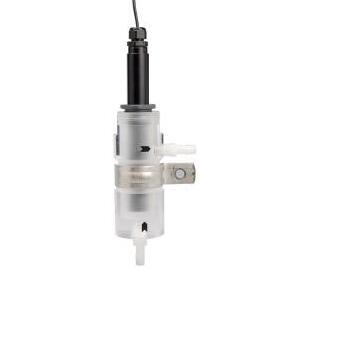
Chlorine dioxide sensors-CLD502,CLD505 and CLD510
The CLD series (chlorine dioxide sensor) uses advanced ampere measurement technology. Designed for water treatment and disinfection applications, used with chlorine dioxide, pools, etc., these sensors have three ranges to choose from to detect the concentration of chlorine dioxide. The detection ranges of CLD502,CLD505 and CLD510 are 0-2ppm, 0-5ppm and 0-10ppm, respectively. The sensor outputs a 4-20mA signal, which is adjusted according to the range 0-2, 0-5 or 0-10ppm. It is easy to replace the membrane cover and filling fluid to maximize sensor life. The sensor can be installed with the flow pool for new equipment and can also be used to replace other chlorine dioxide sensors with an output of 4-20 Ma. Please consult us for compatibility. There is a choice of flow meters (FM001) to help provide consistent flow, thereby enhancing system stability.
Characteristics of chlorine dioxide sensors CLD502,CLD505 and CLD510
1. Current mode sensor technology
2. Real-time continuous measurement
3. Range: 0-2 or 0-10ppm
4. Built-in temperature compensation
5. Large volume electrolyte cell
6. Easy to replace thin films and electrolytes
Technical parameters of chlorine dioxide sensors CLD502,CLD505 and CLD510:
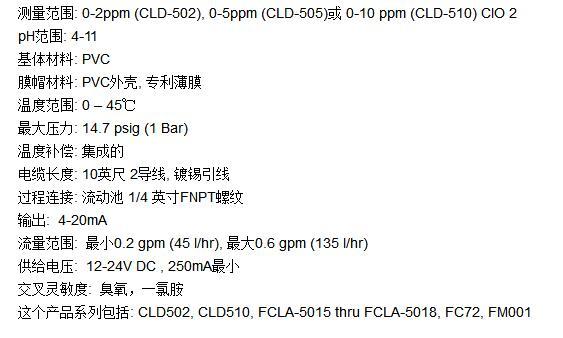
Technical parameters of CLD502,CLD505 and CLD510
- Prev
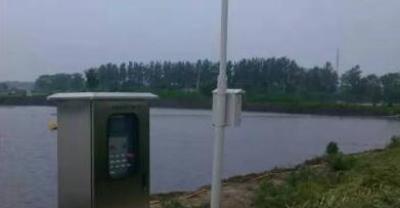
Family daisies pot culture method, let daisies bloom heartily
Daisies, also known as spring chrysanthemum, Malan flower head, longevity chrysanthemum, suitable for balcony, windowsill, living room, pay attention to daisies can not bear high temperature, pay attention to shade in summer. Chicks.
- Next
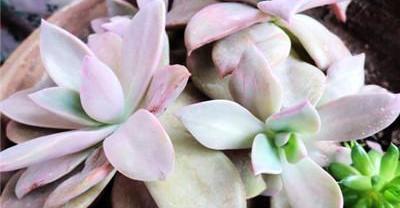
How to do cold cough in winter breeding chickens
Maxing Shigan Granule has four pharmacological effects of clearing heat, ventilating lung, resolving phlegm and relieving cough and asthma. It is aimed at cold and cough caused by respiratory diseases of chickens in winter.
Related
- On the eggshell is a badge full of pride. British Poultry Egg Market and Consumer observation
- British study: 72% of Britons are willing to buy native eggs raised by insects
- Guidelines for friendly egg production revised the increase of space in chicken sheds can not be forced to change feathers and lay eggs.
- Risk of delay in customs clearance Australia suspends lobster exports to China
- Pig semen-the Vector of virus Transmission (4)
- Pig semen-the Vector of virus Transmission (3)
- Five common causes of difficult control of classical swine fever in clinic and their countermeasures
- Foot-and-mouth disease is the most effective way to prevent it!
- PED is the number one killer of piglets and has to be guarded against in autumn and winter.
- What is "yellow fat pig"? Have you ever heard the pig collector talk about "yellow fat pig"?

